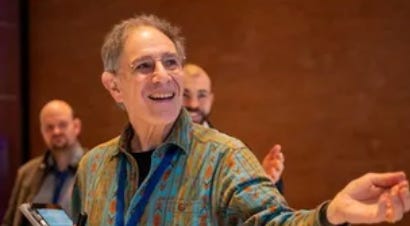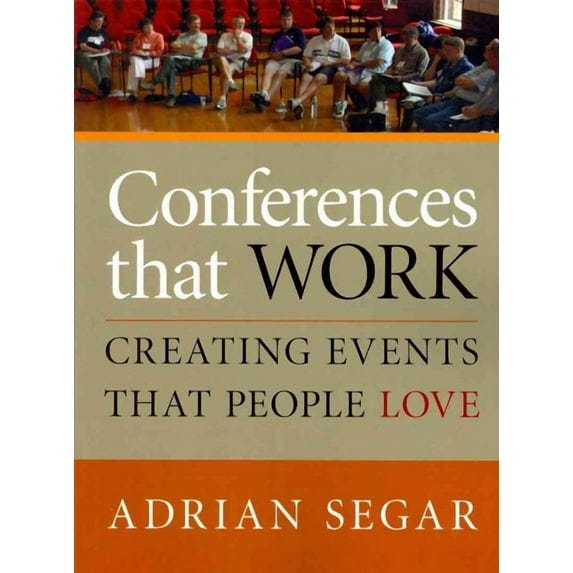The Facilitator Whisperer: Why Adrian Segar May Be the Most Important Event Designer You’ve Never Heard Of
There are people who change the way we gather, and then there are those who change the why.
Adrian Segar doesn’t wear a headset or walk around with a clipboard. He doesn’t run a global events agency. He doesn’t even love being on stage. But he might be the single most influential thinker in the world of participatory gatherings—and for over three decades, he’s been quietly shaping a different kind of future for conferences, one where connection isn’t an accident but a design feature.
In an era dominated by spectacle and stagecraft, Segar offers something radical: a gathering model rooted in emotional transformation. His belief? People don’t change because of PowerPoints. They change because of emotional experience. They change when they feel seen, heard, connected—when something stirs inside them, even if they can’t rationalize it.
Throughout our interview, I kept circling back to the same question: How does that emotional spark actually become action? Segar didn’t flinch. “It’s not rational,” he said. “We act when something shifts inside. That’s what makes us choose.”
His own life proves the point. After earning a PhD in particle physics and conducting cutting-edge research at CERN, Segar veered off course—not for data, but for love. He woke up one morning in rural Vermont and simply knew he needed to live there. That gut feeling upended his trajectory—and he followed it.
Later, when life delivered emotional upheaval at home—when he and his wife were raising adopted twins and their children went through a period of deep struggle—Segar again responded with curiosity, not control. He enrolled in emotional growth workshops at the school where one of his children was placed, and eventually began staffing them. These weren’t lectures; they involved intense small-group work. “In three days, the people in our group knew each other more deeply than probably anyone else in their lives.
That experience transformed him. He saw firsthand how strangers could enter a room guarded and leave changed—if the process was right. Not because of charisma, but because of emotional architecture. The kind facilitators build.
Segar began to incorporate what he learned into his own events. He designed environments where people felt safe enough to speak. He used simple techniques like pair-share and fishbowls, but more importantly, he tuned the emotional conditions of the room. His goals wasn’t weren’t simply engagement. They were intimate connection and top-of-mind learning, leading to transformation.
The neuroscience supports this. Emotional experiences trigger the amygdala, activating the limbic system and encoding memory more deeply than rational input. When a person has an insight and feels safe and seen, the learning sticks. The behavior shifts. The action follows.
“I’m not a guru,” Segar insists. “I don’t want people looking at me. I want them looking at each other.”
His events aren’t performance. They’re immersion. And if you’ve ever sat in one—felt that moment where the air shifted, where someone across from you said exactly what you didn’t know you needed to hear—you know what he’s doing. He’s laying emotional tracks so your next move isn’t just logical. It’s human.
In Segar’s world, the facilitator is the architect of action. Not because they tell you what to do, but because they create the conditions where you decide for yourself.
And that’s why we’re telling this story. Because the people who guide our most important rooms—our moments of shift—deserve to be known.
What does it actually look like when Adrian Segar guides a room?
It doesn’t start with a panel or a podium. It starts with agreements that offer group freedoms and safety. In Segar’s hands, a room is not a blank space. It’s an emotional instrument, tuned through technique.
He continues with his ‘Three Questions’—an unassuming but potent method to elicit trust. Participants share who they are, what they would love to have happen while they’re together, and what they’ve done or know that might help others. Suddenly the room isn’t anonymous—it’s a shared resource.
From there, Segar might deploy the ‘Fishbowl’—a dynamic conversational format where a small group discusses a topic while others observe. Anyone can tap in, but no one dominates. The structure removes performance pressure while surfacing authentic voices.
When problems arise, they go to the ‘Solution Room.’ There, each person brings a challenge to a group of peers who’ve pledged to listen, reflect, and respond—without fixing. It’s a therapy session disguised as strategy. Participants often leave stunned: by how seen they felt, and how generous others could be.
Other tools—like ‘Group Spectives’ (collective reflection), ‘Body Polling’ (expressing positions physically in a room), and ‘Silent Affinity Clusters’ (mapping out common needs and offers)—might follow. But none are used for novelty. They are surgical. Chosen with care.
As one participant described it: “He made a room of 100 strangers feel like collaborators. And I didn’t realize until later: I wasn’t just attending. I was leading.”
This is the deeper truth of Segar’s method. It’s not just about interaction. It’s about restoring agency. Giving people a reason—and a structure—to speak, act, decide.
The result? Rooms that remember themselves. And people who walk out ready to do something they hadn’t even known they were there to do.
Adrian Segar: Quick Access to Books & Resources
📘 Conferences That Work — The foundational guide to participant-led event design. Buy
📗 Event Crowdsourcing — How to build an agenda from the ground up, us
ing the crowd. Buy
📙 The Power of Participation — Deep dive into techniques like fishbowls, solution rooms, and Group Spectives.
🌐 Website & Blog — Essays, tools, updates.
🎙️ Podcasts — Leading Learning | Events Demystified
🐘 Mastodon — @ASegar |





